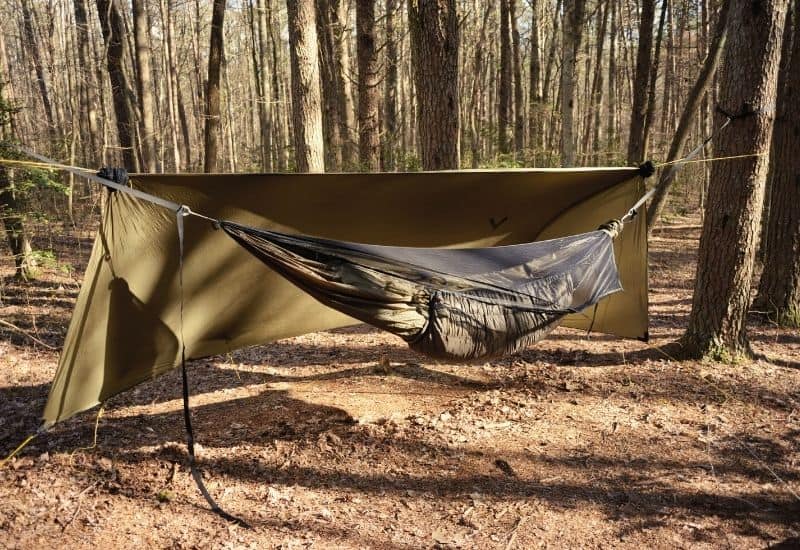There’s nothing like kicking back in a hammock after a long day of hiking or, indeed, anything!
But what about backpacking? Backpacking with a hammocking setup is popular. And why shouldn’t it be? Sleeping in hammocks rules!
But this is also where things start to get a little complicated. Instead of throwing your straps around a few trees, hopping in, and getting your lounge on, you now need to start thinking about things like weather protection, bug protection, and storage.
Enter the ridgeline!
But what are they and do you even need one? Spoiler: you don’t, but they’re darned helpful! Find out why – and how to make one – below.
Table of Contents
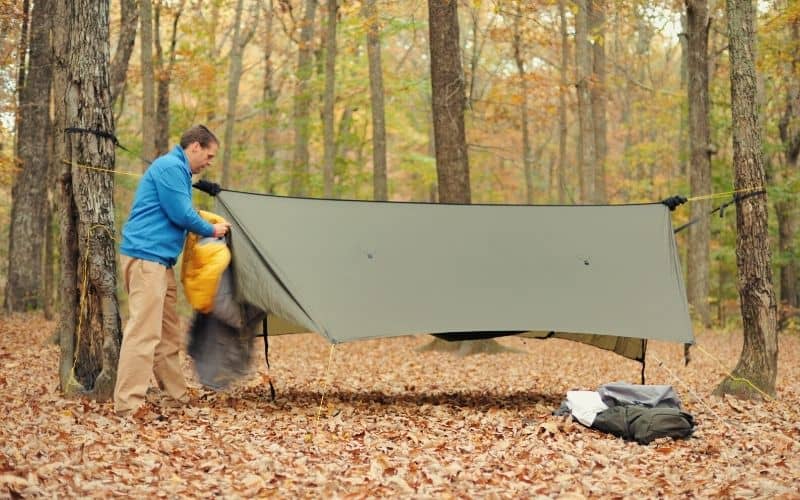
What Is a Ridgeline?
A ridgeline is a rope or cord that runs above your setup lengthwise. Ridgelines come in two varieties: structural ridgelines and continuous ridgelines. The former is used to support your weight and help dial in your hang angle and the latter to hang a tarp above your airborne bed.
If you’re into hammocking, you probably already know Shug. If you don’t, you’re in for a treat!
Structural Ridgelines
Structural ridgelines tie to both ends of gathered-in hammocks and run parallel to the ground. They help to create sag in hammocks and reduce stress on the fabric by reducing the amount of weight it has to support. This is especially important if your “hang” is made of ultralight material.
Setting the sag like this allows you to find the most comfortable position for “hanging out”. With more sag in your hang, you can more easily lay diagonally, which is the most comfortable way to lay in gathered-end hammocks.
By doing this, you’ll be able to sit up much more comfortably when you set the sag at a level that is right for you. Just be sure to set your line so it’s above your head when you sit up!
You can also hang things from your line. Hang a light, your glasses, or anything else you want to have handy while you sleep. You can even get a ridgeline organizer to really up your storage game.
You can fasten a bug net to your line too. This keeps the bug net off your face while still protecting you from those pesky mosquitoes.
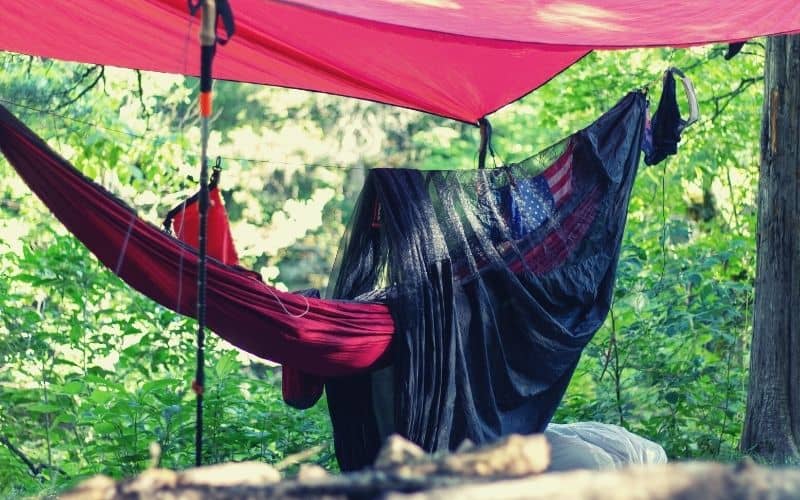
Continuous Ridgelines
While you could feasibly attach a tarp shelter to your structural ridgeline, it’s more practical and effective to hang a tarp from its own ridgeline, aka a continuous ridgeline. This allows the tarp to cover most of your straps and prevents dripping down them when it rains, which will get you and your sleeping bag wet.
Many hammocks hang their tarps from a continuous line and still use a structural line to get the ideal hang angle and minimize stress. They both have their places.
Adjustable Vs. Fixed Ridgelines
Adjustable
Adjustable lines usually come in the form of Whoopie Slings or Universal Constrictor Rope varieties. With adjustable lines like this adjustable whoopie sling ridgeline, you don’t have to tie any knots. This makes it very easy to adjust the length of your line. These are definitely convenient, but they aren’t the only way.
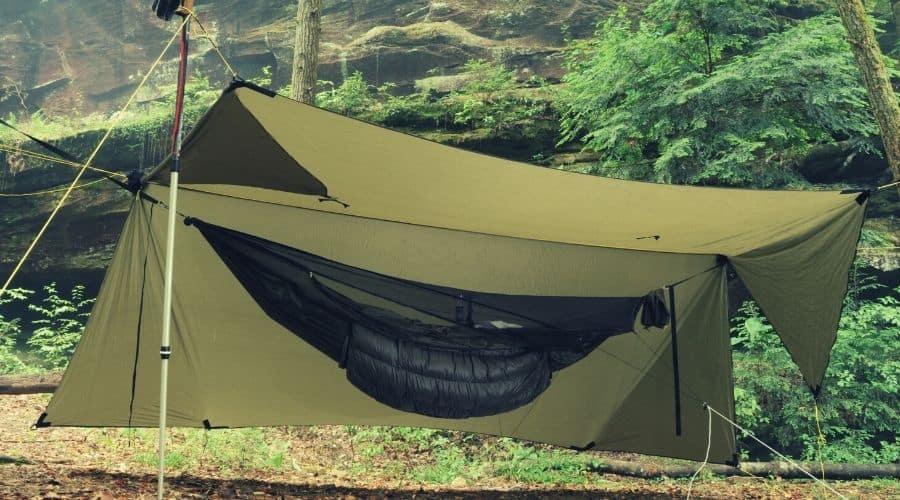
You can also use carabiners and black rings to create your own adjustable ridgelines. The carabiners make it easy to disconnect the line and the rings make it easy to adjust if need be.
It’s worth noting that an adjustable line will generally be heavier than a fixed line, especially if you’re using a bunch of hardware to set it up.
Fixed
You’ll likely only be adjusting your hammock ridgeline a few times before you find your own personal sweet spot. Then, you can just leave your line tied in place. For this reason, fixed lines are pretty common.
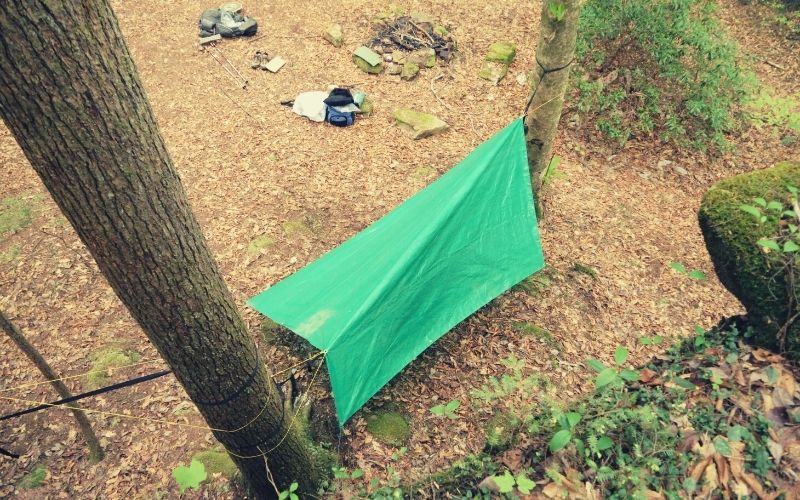
You can make your own fixed line by tying some low-stretch cord to either end of your hammock. Use a bowline knot, a prusik knot, and a taut-line hitch to do this. Find how to tie prusik knots, bowlines, and more in our handy guide to 9 essential hammocking knots. They’ll come in handy when setting up!
Adjustability is useful for things like your straps, as you’ll be adjusting these every time you set up using a new set of two trees. It’s useful for ridgelines, too but not entirely necessary.
How Do You Set Up a Hammock Ridgeline?
Here’s how you set up a structural line:
- Hang your hammock as you normally would – start with our article on how to hang hammocks. You can use straps, webbing, or ropes for this.
- Get a piece of cord that is about the same length as your hammock. Use cord that isn’t stretchy like Amsteel (dyneema) or just utility cord. 550 paracord is a little too stretchy for this purpose, but it’ll work.
- Use a bowline knot to tie a fixed loop on one end of your cord.
- Use a prusik knot to attach the looped end to your suspension just above where it attaches to the gathered end of the fabric.
- Use a taut-line hitch knot to secure your ridgeline to the suspension attached to the other tree.
- Here’s where the trial and error comes in: you’ll begin by setting your line at 83% of the hammock length. Once you have a line that is the “proper” 83% length-wise, you’ll likely want to tweak the length to see what works best for you.
Happy Hammocking!
Alright, let’s go find the perfect trees. It’s time to make camp!
We hope you found this guide helpful. Feel free to share it with a friend if you did! And please leave us a comment below if we missed something!
